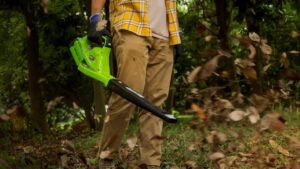The factors driving increased car rental times in Canada

Length of rental (LOR) for collision replacement-related rentals in Canada jumped nearly six days year-over-year, driven in part by ever-changing parts availabilities and repair backlogs, said car rental agency Enterprise Rent-A-Car.
The overall Canadian LOR was 16 days in 2022 Q2, an increase of 5.8 days from 2021 Q2 and almost a full day (+0.9) from 2022 Q1, said a report from Enterprise.
Ontario saw the largest increase of average billed days for Canada at 18.3 in 2022 Q2 (up 7.2 days from 11.1 in 2021 Q2). All other provinces saw an increase of between four and 7.1 days year-over-year.
What’s driving this increase?
“The results for the second quarter of this year are significant, as it appears many of the factors affecting everyone in the collision industry – including technician staffing, ever-changing parts availabilities, new and used vehicle pricing, inflationary pressures, and new claims processes – are becoming prevalent,” the report said.
The Ontario LOR’s 7.2-day increase to 18.3 days was both the highest overall LOR and the largest increase, noted the report, Canada Average Length of Rental by Province Q2 – 2022.
Nova Scotia increased 7.1 days to 17.4 days, while Quebec was up 6.9 days to 17.2 days. The lowest overall LOR was New Brunswick at 13.4 days, followed by Newfoundland and Labrador at 14.6 days.
Credit: Enterprise Rent-A-Car
New OEM parts availability is still driving many delays. The good news is there are fewer brands showing big delays, Greg Horn, PartsTrader’s chief innovation officer, said in the report. Six OEM brands had median delays of more than 20 days in the first quarter of this year, while the same was true for only three OEM brands in the second quarter.
“As we head into the second half of 2022, aftermarket and recycled parts supply and deliveries are returning to pre-COVID levels,” Horn said. “Most OEMs have made significant improvements as well.”
LOR for rentals associated with drivable claims was 11.4 days in 2022 Q2, up 3.3 days from the first quarter.
The non-drivable results from the second quarter of 2022 were significant. LOR was 30.3 days, a drastic increase of 13.2 days over the second quarter of 2021. All provinces saw large increases – Prince Edward Island was the largest at 35.4 days; only Quebec (24.1) and New Brunswick (28.4) came in under 30 days.
Could repair volume and backlog shed light on the significant increases in non-drivable LOR? Using feedback from the U.S., the report noted the national average repair backlog in the U.S. remains near record levels.
“More than 13% of shops are still scheduling more than eight weeks out, a percentage that, until this past winter, hadn’t exceeded 2%,” said Josh Yoswick, editor of the weekly CRASH Network newsletter in the U.S. “Shops with three months of backlog are not uncommon.”
There is also an impact on parts availability to the repair log, Horn said. “While there are parts availability improvements in Q2 2022, delays still exist in the OEM parts supply chain and consequently, shops are scheduling farther out to protect themselves from potential parts delays.”
LOR for total loss-affiliated rentals also saw a seven-day increase over 2021 Q2 to 20.6 days in 2022 Q2. PEI had the highest result at 30.3 days, an increase of 19.7 days; Ontario was next highest at 22.4 days.
The LOR summary is produced quarterly by Enterprise. Data excludes public carrier provinces of British Columbia, Manitoba and Saskatchewan.
Feature image by iStock.com/dima_sidelnikov



